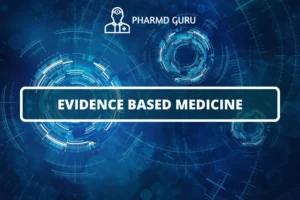Viral hepatitis refers to inflammation of the liver caused by viral infections. There are several types of viral hepatitis, including hepatitis A, hepatitis B, hepatitis C, hepatitis D, and hepatitis E. These infections can lead to various degrees of liver damage and are a significant global health concern. Understanding the etiopathogenesis, or the underlying causes and mechanisms, of viral hepatitis, as well as the available pharmacotherapy options, is crucial for effective management. In this article, we will explore the etiology of viral hepatitis, its pathophysiology, clinical presentation, and the pharmacological interventions used in its treatment.
SCROLL DOWN TO THE BOTTOM OF THIS PAGE FOR ACTUAL NOTES.
Table of Contents
- Introduction
- Understanding Viral Hepatitis
- Etiology of Viral Hepatitis
- Pathophysiology of Viral Hepatitis
- Clinical Presentation
- Diagnostic Approaches
- Treatment Options
- Pharmacotherapy for Viral Hepatitis
- Antiviral Medications
- Supportive Care
- Prevention and Vaccination
1. Introduction
Viral hepatitis is a condition characterized by liver inflammation caused by viral infections. It can range from mild acute infections to chronic liver diseases that may lead to cirrhosis or liver cancer. Understanding the etiopathogenesis and available treatment options is essential for managing viral hepatitis effectively.
2. Understanding Viral Hepatitis
Viral hepatitis is caused by different types of viruses, including hepatitis A, hepatitis B, hepatitis C, hepatitis D, and hepatitis E. These viruses primarily target the liver and can cause a range of symptoms and complications. Each type of viral hepatitis has its mode of transmission, incubation period, and clinical features.
3. Etiology of Viral Hepatitis
Viral hepatitis is caused by specific viruses, each with its unique characteristics:
- Hepatitis A: Transmitted through the ingestion of contaminated food or water.
- Hepatitis B: Transmitted through blood, sexual contact, or perinatal transmission.
- Hepatitis C: Transmitted through blood contact, primarily through unsafe injection practices or transfusions.
- Hepatitis D: Only occurs in individuals already infected with hepatitis B.
- Hepatitis E: Transmitted through the ingestion of contaminated food or water, particularly in areas with poor sanitation.
4. Pathophysiology of Viral Hepatitis
The pathophysiology of viral hepatitis involves the following processes:
- Viral entry into hepatocytes (liver cells)
- Viral replication within hepatocytes
- Activation of the immune system
- Inflammation and liver cell injury
- Impaired liver function and regeneration
5. Clinical Presentation
The clinical presentation of viral hepatitis can vary depending on the type of virus and the stage of infection. Common symptoms include:
- Jaundice (yellowing of the skin and eyes)
- Fatigue
- Abdominal pain
- Loss of appetite
- Nausea and vomiting
- Dark urine
- Pale stools
6. Diagnostic Approaches
Diagnosing viral hepatitis involves several approaches:
- Medical history and physical examination
- Blood tests to detect viral markers and assess liver function
- Imaging studies, such as ultrasound or MRI, to evaluate liver health
- Liver biopsy, in some cases, to assess the extent of liver damage
7. Treatment Options
The treatment of viral hepatitis aims to reduce viral replication, alleviate symptoms, and prevent complications. The specific treatment options depend on the type of viral hepatitis and the stage of the disease.
8. Pharmacotherapy for Viral Hepatitis
a. Antiviral Medications:
- Hepatitis A: No specific antiviral treatment; supportive care is usually sufficient.
- Hepatitis B: Antiviral drugs such as nucleos(t)ide analogs or interferons can be used to suppress viral replication.
- Hepatitis C: Direct-acting antiviral (DAA) medications are highly effective in curing hepatitis C infection.
- Hepatitis D: Treatment primarily focuses on managing hepatitis B infection.
- Hepatitis E: No specific antiviral treatment; supportive care is the mainstay.
b. Supportive Care:
- Adequate rest, hydration, and a balanced diet to support liver health.
- Symptomatic relief for symptoms like nausea, abdominal pain, and fatigue.
- Regular monitoring of liver function and viral load.
9. Prevention and Vaccination
Prevention plays a crucial role in controlling viral hepatitis:
- Hepatitis A and E: Improved sanitation, access to clean water, and vaccination.
- Hepatitis B: Vaccination of infants and high-risk individuals, safe injection practices, and blood screening.
- Hepatitis C: Prevention of bloodborne transmission, safe injection practices, and harm reduction programs.
ACTUAL NOTES:




